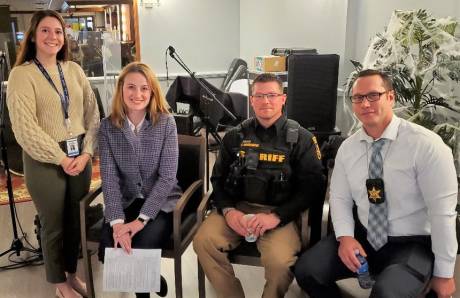As Fentanyl ODs deaths rise, residents encouraged to learn how to administer Naloxone
Press release:
Fentanyl is now the leading cause of death for Americans 18 to 45 years old. It is being mixed illegally with drugs like counterfeit painkillers, heroin, cocaine, and methamphetamine. Fentanyl is 50 times more potent than heroin and 100 times more potent than morphine, so the lethal dose is much smaller. You cannot see, taste, or smell fentanyl, but there is something you can do to protect others. Getting trained to administer Naloxone can help get those that are experiencing an overdose the time they need to get help. Naloxone is an FDA-approved medication that works to reverse an opioid overdose, including a fentanyl overdose. Naloxone works as an opioid antagonist by binding to opioid receptors and blocking the effects of opioids.
In Genesee County, fentanyl has caused a large number of deaths, and has even been found mixed in with other drugs. Since 2018, there have been 58 fatal opioid overdoses in the county, with 10 additional deaths still pending official causes of death as of November 2022. In 2020, Genesee County experienced 15 fatal opioid overdoses (25.7 per 100,000). With a higher fatal opioid overdose rate than that of New York State in 2020 (21.8 per 100,000), it is especially important for Genesee County residents to know the signs of an overdose so naloxone can be administered.
If someone is having difficulty breathing, is unconscious, choking, or experiencing discoloration of their skin or lips, an overdose may be occurring. Naloxone can be used to reverse both fentanyl and other opioid overdoses, such as heroin, oxycodone, morphine, and methadone. There is no harm in administering naloxone if an overdose is not occurring or opioids are not in the body.
The Naloxone Co-Payment Assistance Program, commonly referred to as N-CAP, can help individuals obtain naloxone. If you have prescription coverage as part of your health insurance plan, N-CAP will cover up to $40 in prescription co-payments. This ensures there are little to no out-of-pocket expenses for those getting naloxone at their local New York State pharmacy, all of which provide naloxone through a standing order that allows you to get this medication without a prescription. To learn more about N-CAP, please visit: www.health.ny.gov/overdose.
Individuals who use any type of illicit substance or misuse prescribed opioids are at risk of experiencing an overdose. Now more than ever, it is important to have naloxone nearby. Encourage your loved ones to be trained, carry naloxone, and tell their friends where they keep it in case they overdose. Reversing an overdose can be done in four steps: call 911, administer naloxone by inserting into the nostril and pressing the plunger, give CPR if trained, and stay until help arrives.
To learn more about fentanyl and naloxone, visit:
- HEALing Communities Study Website: www.HealTogetherNY.org/Genesee
- GOW Opioid Taskforce Website: www.gowopioidtaskforce.org/
- GO Health Facebook: www.facebook.com/GOHealthNY

